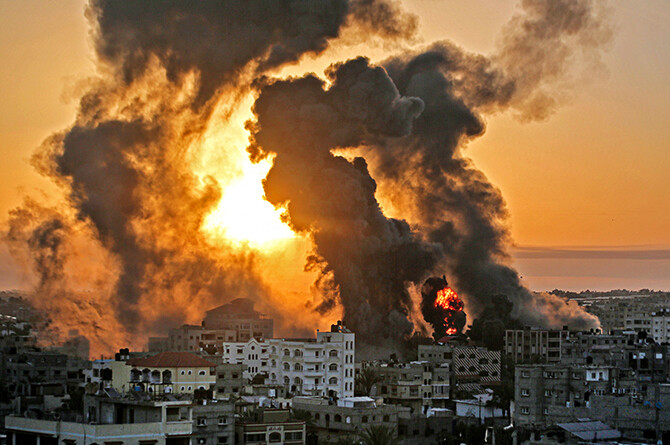
GAZA CITY – Israel's military conducted its first airstrikes on Gaza City after issuing an evacuation order on September 5, local time, signaling a major escalation in its offensive to take control of the northern Gaza Strip. The move follows months of escalating conflict and a prior general recommendation for civilians to evacuate to the southern part of the Gaza Strip.
In a statement on X (formerly Twitter), Israeli Defense Minister Israel Katz declared, "The first evacuation notice has been delivered before an attack on a terror high-rise building in Gaza City." He warned that "the gates of hell are now unbolting in Gaza City," and that they would "not close until the Hamas murderers and rapists accept the conditions for ending the war—the release of all hostages and disarmament." This marks the first specific evacuation order targeting a particular building, a significant shift from previous, broader warnings.
Approximately two hours later, the Israel Defense Forces (IDF) confirmed in a statement that they had "struck a high-rise building used by the Hamas terror organization." The IDF stated that a prior warning was issued to minimize civilian casualties and that precision munitions were used in the attack. According to the military, the building contained underground infrastructure that could be used to attack Israeli forces.
The IDF has identified several key targets within Gaza City, including a network of tunnels for ambushes and escapes, intelligence-gathering systems, sniper nests, anti-tank positions, observation posts, and command-and-control centers. The military plans to continue its airstrikes against these targets and to dismantle remotely detonated explosives hidden throughout the area.
In a recent press conference, IDF spokesperson Effie Defrin stated, "We currently have operational control of 40% of the Gaza Strip." He added that "operations will expand and intensify in the future." The ongoing military campaign, which aims to dismantle Hamas's infrastructure, is expected to intensify as Israeli forces push deeper into the urban areas of Gaza City, raising concerns about the potential for further civilian casualties.
The situation remains highly volatile, with both sides refusing to back down. As Israel tightens its grip on the northern part of the territory, the humanitarian crisis for civilians is expected to worsen. The international community continues to call for a de-escalation, but the calls have so far gone unheeded. The ongoing conflict shows no signs of resolution, and the coming days are likely to bring more intense fighting and significant challenges for all involved.
[Copyright (c) Global Economic Times. All Rights Reserved.]






























